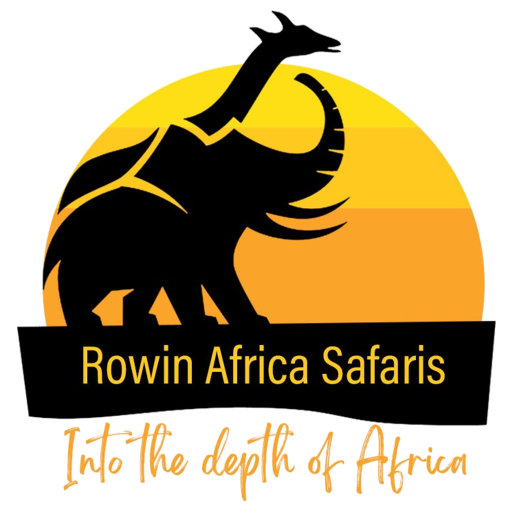Tanzania migration safari is the world’s largest wildlife movement, and it occurs there every year in Tanzania, and this takes place in Serengeti National Park. In addition to being a popular safari location, Serengeti National Park is also recognized for the annual wildebeest migration safari. This national park is located in Tanzania’s northern region and is accessible throughout the year.
Over 2 million wildebeests travel the Mara-Serengeti ecosystem in search of fresher water and greener pastures. The migration safari in Tanzania is cyclical, and the herds migrate in a clockwise orientation, yet it is challenging to predict where the herds are at any given time because the wildebeests take their own routes.
Predator attacks, where lions, leopards, and cheetahs attack the wildebeests by lurking in the adjacent grazing fields, are one of the challenges that the wildebeests must overcome during their migration.
The Mara River presents a challenge for the wildebeests as well. The river separates the Maasai Mara reserve in Kenya from the northern portion of Serengeti National Park. The crocodiles in this river also prey on the wildebeests as they cross.
Tanzania migration Safari.
Serengeti National Park.
The Grumeti River, which is located in the western portion of the national park, is another river that wildebeests cross during the wildebeest migration in Serengeti.
The wildebeests migrate through Tanzania’s Serengeti National Park with the help of other wildlife species including gazelles and zebras. The wildebeest herds can also be spotted near Ndutu during the wildebeest migration safari in Tanzania.
Throughout the year, the wildebeests move in the following ways as they migrate through Serengeti National Park:
From January to March.
The calving season, which occurs during the wildebeest migration in the months of January through March, is when calves are born. Around the Ndutu area in the southern plains of Serengeti National Park and the Ngorongoro Conservation Area, over 8000 calves are born every day during the calving season.
A good time to witness predators attacking wildebeests during Tanzania migration safari in the Serengeti National Park is during the first few months of the year. These predators target the young calves, and during a safari in the Ndutu region in February or March, you can enjoy seeing lions chase wildebeests on the savannah plains.
April and May.
You can visit the middle regions of the Serengeti national park, where wildebeests can be seen grazing in the wide savannah and around the kopjes, to catch the Tanzania migration during a safari in the Serengeti national park in April or May.
However, April and May are rainy months, and rain is experienced while on safaris near the Serengeti National Park. Because the vegetation is greener during these months, photography is amazing and wildlife viewing is also excellent despite the rains.

June and July.
The Grumeti River in the western Serengeti National Park is used for water crossings during the Tanzania migration safari during these months. The wildebeest herds continue to travel northward through Serengeti National Park after crossing this river.
August.
The wildebeests migrate to the Mara River in August, where the main river crossing occurs. During this month, safaris are frequent in the northern Serengeti National Park as visitors try to capture the magnificent sight of the herds of wildebeests crossing the Mara River into the Maasai Mara reserve in the southwest of Kenya.
The wildebeest migration safari will restart when they enter Kenya’s Maasai Mara reserve and then make their way back to the southern region of Serengeti National Park.
After the wildebeest migration safari, various camps relocate to give their visitors the chance to stay close to their place of stay while on a safari around Serengeti National Park and in a location where they can see the wildebeests.
To provide visitors an opportunity to view the migration safari in Tanzania around the destination while on vacation in Tanzania, safaris are organized throughout the year in various areas of Serengeti National Park for a number of days. The north, south, middle, and western regions of Serengeti National Park make up the entire park.
In addition to the big five-elephants, lions, leopards, rhinos, and buffalo which are also sought-after by many tourists on safari in Tanzania, there is more to view in the Serengeti national park during safaris.
Other wildlife species that can be spotted on safaris in the Serengeti National Park include waterbucks, giraffes, impalas, gazelles, zebras, hyenas, warthogs, hartebeests, hippos, and many others. Serengeti National Park is home to a variety of bird species.
Game drives, walking safaris, hot air balloon safaris, and bird watching excursions are all possible activities on safaris near the Serengeti National Park.
From the town of Arusha, you can drive or take a flight to the Serengeti National Park. Serengeti National Park is about a seven-hour journey from Tanzania’s Arusha town. During safaris inside the national park, 44 safari vehicles are employed.
You can fly with any domestic airline that provides flights around destinations in the northern portion of Tanzania to get to Serengeti National Park, including Regional Air, Coastal Aviation, and Flight Link, among others. Seronera Airstrip, Kogatende Airstrip, Grumeti Airstrip, Lobo Airstrip, Sasakwa Airstrip, among others, are just a few of the airstrips that can be found in Serengeti National Park.
You can book flights to Kilimanjaro International airport and then decide whether to stay the night in Arusha and drive to the national park the next day or head to Arusha airport for a domestic flight to the national park to participate in a wildebeest migration safari in Tanzania.
While on a Tanzania migration Safari, that’s where you visit Serengeti National Park and take in the wildebeest migration.
